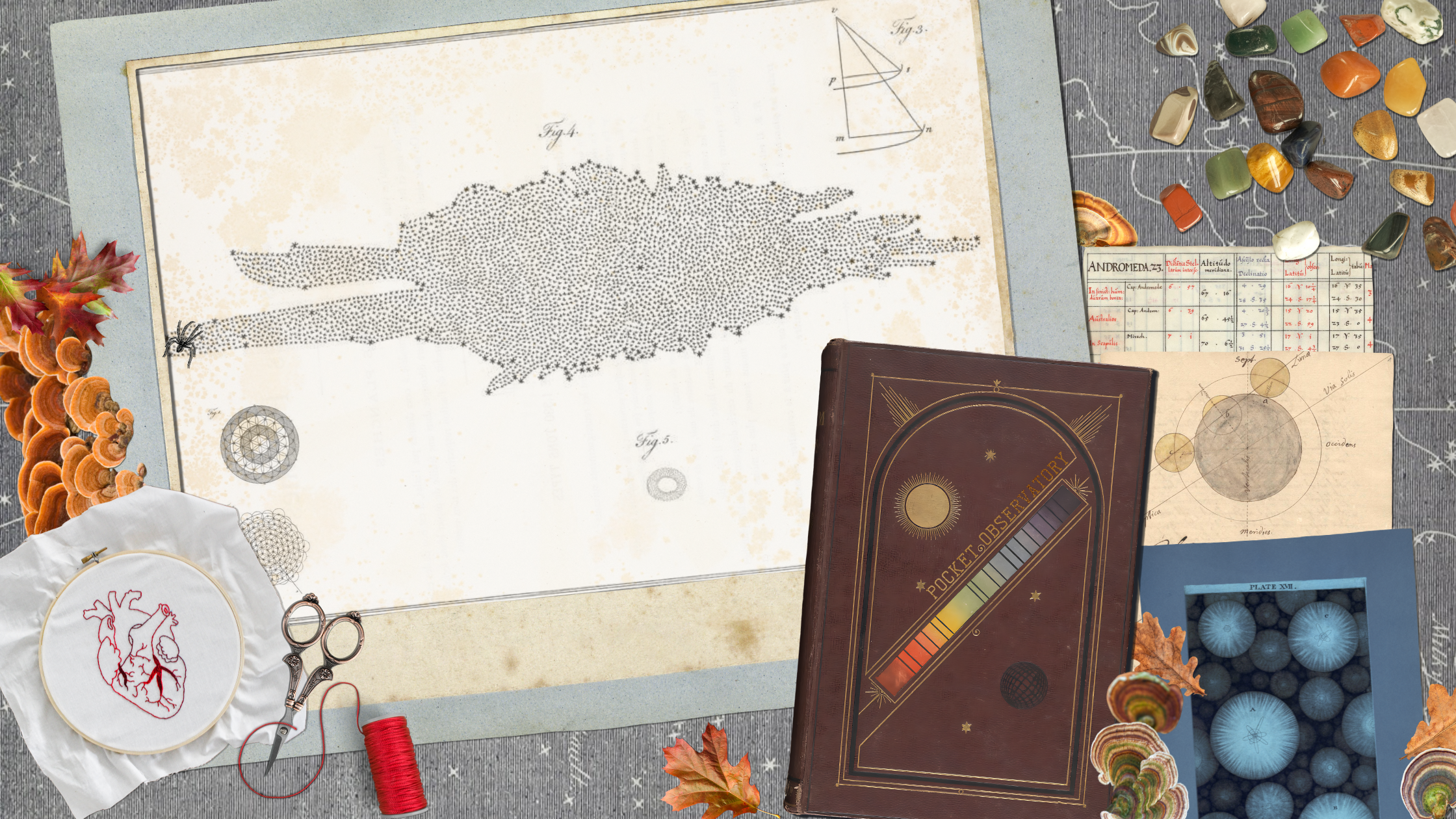Frame Worthy
This is where it all comes together.

I've spent the past two months building the frame for this observatory. I was only able to do this because of an incredibly generous donation from an incredibly gracious reader. She, and the other Pocket Observatory members, came together to buy me the time I needed to design and implement something new.
As I press publish on this, I hope I've made you all proud. Even though I've never met most of you? And probably never will. Life is weird. And I am grateful. (And terrified.)
Anyways, let me tell you about it.
On Monday, I'll be back to researching and writing. A process that has always felt like spinning thread. You'll be back to getting newsletters from me in your inbox. These things will stay the same! But now I have a way to turn all those threads into warp and weft. They'll be stretched across The Observatorium.

The Observatorium is a dynamic archive. It contains all kinds of different Objects that interact with each other and the observer. Here is an incomplete list of Objects: Articles by me and many, many others, etymology, books, cultural artifacts, organizations - from churches to tech companies, research notes, audio, video, a selection of my personal zettelkasten, newspaper clippings, historical figures, pop culture moments and high-resolution art files ready for your downloading pleasure.
All of these objects are connected to one another with tags like Afrofuturism, Shareholder Capitalism, Stars, and Allium. The tags will decay over time and new tags will take their place, changing the shape of the archive and our perception of its objects.
I take dozens of pages of notes for every single piece I write. Most of those notes get cut from the final essay. And then they languish in my docs, without ever making it into an essay. All that research will be added to The Observatorium too.
Each week, I'll add more to the archive from my own reading, writing and general discovery. Participants in The Pocket Observation Project can choose to add their Pocket Observations to the Observatorium. Each observance is a thread spun and then linked to other objects in the archive. Every new thread will change the structure of The Observatorium.
We'll be building something together. All while avoiding algorithms, community founder parasocial weirdness and pyramid shaped "opportunities!"
Here's a quick look inside The Observatorium.
This is just one corner of the web I've been weaving for the past five years. I am reminded yet again that I'm just a common house spider, listening for vibrations from her funnel-shaped observatory.
A Defense of the Common House Spider
Have you heard of the Barn Funnel Weaver Spider? If you haven’t heard of them, you’ve seen them. They’re some of the most common house spiders in the world. They go by other names, Common House Spider, Drain Spider, Lesser European House Spider. Their Latin name is Tegenaria Domestica. Tegenaria is their Genus and Domestica is their species. Domestica is from domesticus which means “belonging to the house.” This spider does belong to the house, to nearly all houses. ...
They’re called funnel weavers because when they weave a web, they make a funnel in a corner. The spider retreats into these funnels and uses them for protection and predation. Their webs aren’t sticky, but they are sensitive. Each warp and weft vibrates when an insect walks across it. Our Barn Funnel Weaver sits in her respite, waiting. When the vibrations move her, she moves quickly....
The archive is in its early stages. But I have already been stunned by the connections I've discovered simply by following the vibrations of the threads.
Like one of my favorite art installations about the home was influenced by the work of Hieronymus Bosch's The Garden of Earthly Delights. Suddenly, I see both works and both artists differently. Or the series of connections that helped me see more clearly see the threads running through redlining in California and the Afrofuturist work of Octavia Butler.
This information was all in my notes! For years! But I needed better framing to understand what it meant.
This is all very simple to use.
Pocket Observatory members enter The Observatorium by clicking on a tag. Then you can deep dive into all the objects in a list. You can also go to the upper right hand corner and select the graph view. When you do, you'll reveal a segment of the web we've been weaving. Each object has enough information to reveal another segment, another shape, another insight.

The Software
The Observatorium is being built with Capacities, a software framework for knowledge development.
Capacities is the only organization engine that's ever worked for my many-wayed mind. And - joy of joys - Capacities is now an offline-first product with excellent privacy controls. Like, this software allows your ideas to be ideas? And does not insist on transforming them into mined-data? What?!
The Observatorium is online because I want you to be able to observe it. But! it is not listed and it can only be accessed via the secret links I share in the member-only spaces. If you participate in the The Pocket Observation Project and decide to submit observations, you can do so completely anonymously through a link provided in each month's Observance.
Want to start using Capacities to weave your own web of observance?
Use this link to get your first month free. And yes, it is an affiliate link! Let's unpack that really quickly.
If you've been here since the beginning, you know I've never been an affiliate for any product other than books! I don't want to be incentivized to sell you anything but my own work.
I've used this software for a very long time. I really like Capacities' commitment to privacy, organic growth and transparency. But it's just one tool out of thousands. I am not going to tell you it's the right one for you. It's just the one I am using here and at home.
If some of you decide to use Capacities, signing up with my affiliate link will help support Pocket Observatory. And I think that's great. I also think it's great if you don't use it. You know? You know.
And honestly, I feel that way about The Observatorium too! Some of you are going to forking love that thing. And some of you will never be interested in it. I think that's great. I think you are great. I am just so glad you are here, however you are here.
Anyways, I am glad to be back.
I am glad to be building with you again. I have so much to say about...everything. And I worry I haven't described this well enough. I've definitely left out a lot of details.
Like how the archive interacts with The Pocket Observation Project curriculum I spent the past two months writing! Or what I think decaying tags can teach us about information transmission. Or how book recommendations will work in the archive. Or or or...you get it.
But I am trying to remember that you and I have time to go through all of that. And that I am not really trying to sell you on anything or convert you to anything or whatever it is a "creator" is supposed to do when launching a new feature. I am not that creative. You are not here to be converted. I haven't built a feature. I've just learned how to use a frame.
So just picture me standing in a doorway, arms extended, shouting, "Look what I made!"
See you next week. When I will do my best to NOT write about The Secret Lives of Mormon Wives. But also...I am not promising anything.


